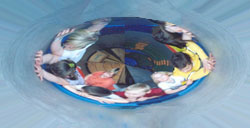Gender differences in perceived movement competence in childhood
Perceived movement competence (MC) has been identified as one of the potential correlates of physical activity (PA) during childhood. The aim of the present study was to examine perceived MC differences between boys and girls. One hundred and forty-two children (65 boys), aged 6-9 years (Μ=7.6, SD=0.9 years) volunteered to participate. Children’s perceived MC was assessed with the Pictorial Scale of Perceived Movement Skill Competence-Greek version (Venetsanou, Kossyva, Valentini, Afthentopoulou, & Barnett, under review) that comprises of two sub-scales [object control (OC) and locomotor (LOC)]. To investigate perceived MC differences between genders, multivariate analysis of covariance was utilized, using “age” as a covariate. According to the results, “age” did not differentiate children’s perceived MC. Moreover, boys had higher perceived OC than girls (F1,139=7.3, p= .008, η2= .05), whereas there were no gender differences in children’s perceived LOC (p=.88) or MC (p= .11). It seems that, between 6 and 9 years, gender differences in perceived MC are small and are located only in OC, a finding that can be linked to the kind of activities children participate in. Strengthening perceived MC in both genders, through developmentally appropriate movement experiences, positive feedback and equal expectations may contribute to improving their PA levels.
Gender differences in perceived movement competence in childhood Read More »






